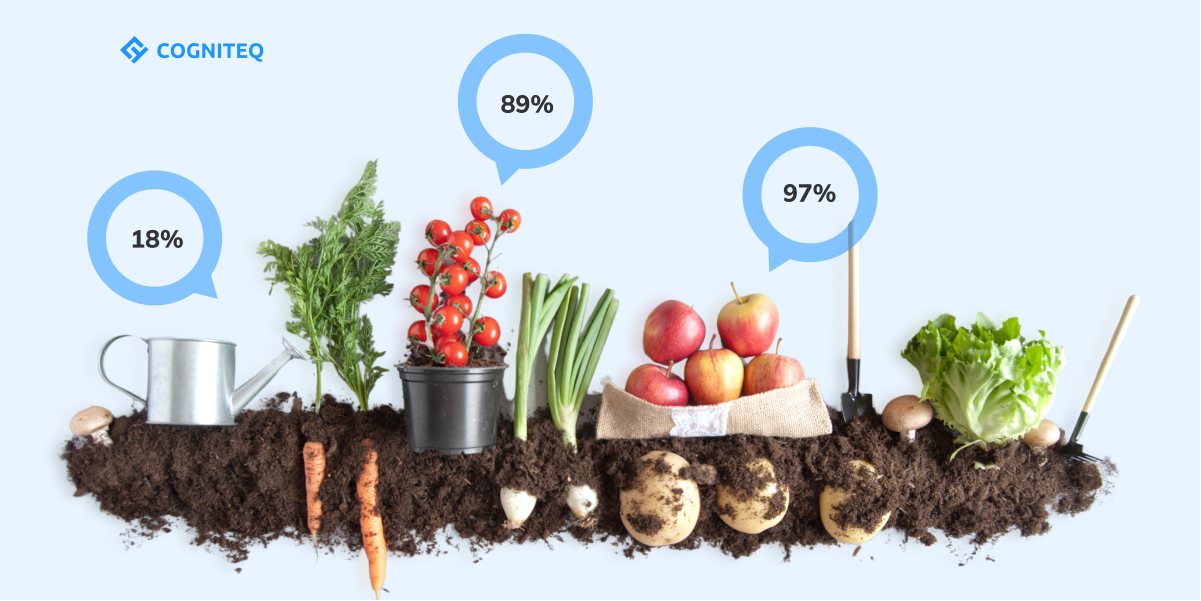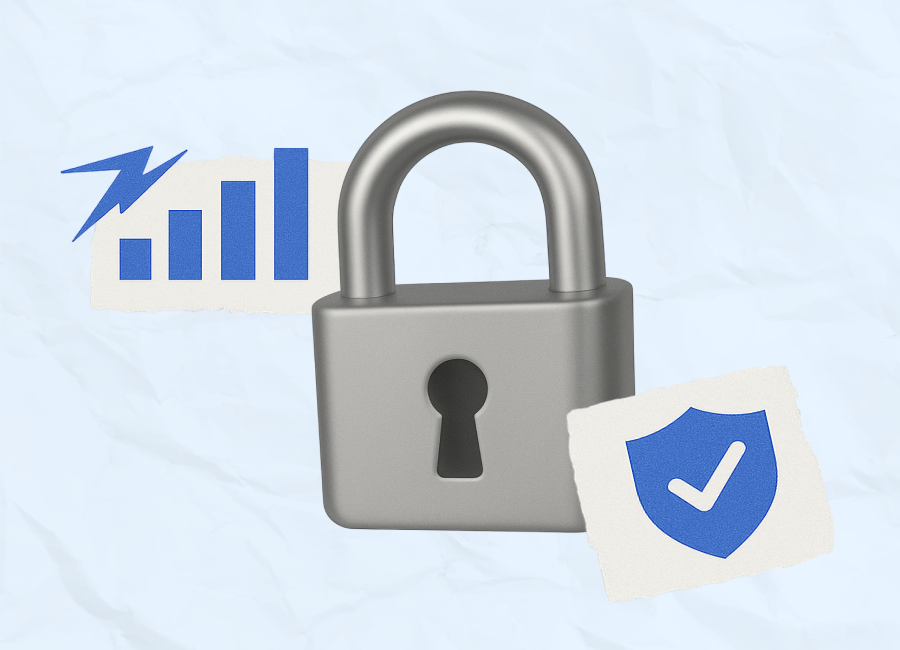The Internet of Things is gradually entering every industry and sphere of our everyday life, thanks to the enormous capacity of these interconnected technologies to streamline so many routine activities. In this article, we’ll focus on one particular sphere of IoT solutions, specifically IoT applications in agriculture, the possible functions of such systems, and the role they already play in the agriculture industry.
Smart agriculture market overview
Today, the term smart farming is used to describe a concept of farm management that involves emerging technologies such as IoT, AI, ML, robotics, drones, and others. It’s employed with a view to enhancing the efficiency of farm operations, improving the quality of products, increasing their quantity, and optimizing farm staff.
In 2021, the size of the global smart farming market was $14.65 billion. According to expert forecasts, this figure could rise to $66 billion by 2030, which means that the market is expected to grow at a CAGR of over 18% in the 2022-2030 period.

According to some estimates, the number of agricultural IoT devices in use could reach 225 million by 2024, which indicates enormous growth within the past 10 years; in 2014, this figure was just 13 million.
IoT developments in the agriculture sector
Let’s have a look at how IoT is changing the farming industry and what benefits are available to farmers who use solutions powered by IoT in agriculture.
First of all, it’s crucial to understand the key components of smart agriculture systems and their functions.
- Smart sensors. Many types of sensors are available today. There are tools for estimating the state of soil and vital factors, detecting signs of infestation and disease, estimating humidity and temperature, as well as monitoring lighting conditions.
- Connectivity hardware. These components are designed to ensure a reliable connection between IoT devices via cellular technologies or WiFi. This hardware helps users maintain access to collected data and real-time indicators even remotely.
- Software. Software solutions help to transfer, process, accumulate and organize data received from sensors.
- Geolocation modules. Using IoT in agriculture, it’s vital to monitor the real-time location of objects. As a rule, developers use GPS tracking for that.
- Data analytics tools. Such services help users to work with huge (and constantly growing) volumes of data sent by connected devices. As you can understand, the main task is not just to collect data but also to find the right ways to work with it so as to derive insights from that data that are useful.
- Robotics. Modern farming greatly relies on various pieces of equipment and machinery, and thanks to cutting-edge technologies, it is possible to apply them more efficiently. For instance, autonomous tractors and automated processing facilities.
Though the use of IoT in the agriculture industry is comparatively new, it’s a growing trend. These technologies are revolutionizing this sector and can significantly reshape its future. Let’s take a look at some of the most important benefits of IoT applications in agriculture.
- Higher farm efficiency thanks to enhanced data collection. One problem of traditional farming is a lack of adequate process visibility and data analysis. Thanks to smart devices that can collect data in real time, farmers can get better insights into the ongoing state of things and gather information about changing weather, crop, and soil conditions. All this helps in making better-informed decisions.
- Resource optimization. With IoT solutions (and precision farming that relies on the Internet of Things), it is possible to get access to accurate data gathered by numerous sensors placed in the fields for better resource planning and allocation. This also helps to avoid unnecessary expenses and reduce wastage.
- Improved production control. Monitoring systems are used for controlling all the steps of the entire crop production process. Having the most relevant data, farmers can react practically immediately to changes in air quality, temperature, and humidity.
Want to create an advanced IoT solution for the agriculture industry?
Our team will be happy to help you. With rich expertise and solid skills in building IoT apps, we will be able to offer you the best solution tailored to your needs.
Applications of IoT in agriculture
To better understand the impact of IoT technology in agriculture, consider some of the most popular applications of these technologies. Here are some of the most widely used examples of IoT in agriculture.

Precision agriculture
Precision farming is probably one of the best-known IoT applications in agriculture. This concept unites all smart farming methods, approaches, and tools aimed at making the whole process of farming more accurate and controlled. Smart farming applications include real-time field observations, vehicle tracking, livestock and crop monitoring, as well as inventory management. The goal of precision farming applications and methods is to help farmers increase the quality of data analysis, which leads to faster and better decisions.
Agricultural drones
The use of drones in the agricultural sector is one of the most promising tech trends today. These IoT devices are well-equipped for collecting agricultural data used for performing crop monitoring, plant counting, and irrigation planning. Moreover, drones have huge potential for the development of precise agriculture and can fulfill more complex tasks, such as spraying for fighting pests and infections. Though it’s too early to speak about mass adoption of these solutions, it’s obvious that that will change in the future.
Climate condition monitoring
As you know, climate and weather conditions play a crucial role in crop production. Moreover, different crops need different conditions for growth. And when farmers do not pay enough attention to these differences, the quality and quantity of their products will suffer. It’s important to track real-time weather conditions and react quickly to threats to save crops. IoT-based smart farming involves placing sensors in fields for gathering data related to environmental conditions: humidity, temperature, rainfall, etc. Thanks to this data, farmers can initially choose the right crops and methods. Some IoT sensors can send alerts when they foresee any serious changes in weather.
Smart greenhouses
Thanks to greenhouses and artificial control of environmental factors, farmers can significantly increase their yields of many fruits and vegetables. However, it’s quite challenging to control all the required parameters manually. And that’s when automation can be of great use. Smart greenhouse systems can continuously monitor and control various factors (such as air humidity, lighting, or temperature) without manual involvement. To make this possible, various sensors can be placed directly in greenhouses to send real-time data to cloud servers with the help of IoT technologies. The cloud platform then processes the data remotely and applies the necessary actions directly in greenhouses.
Livestock monitoring
Alongside modern IoT applications in agriculture are systems that help take care of the well-being and health of livestock. Smart IoT-based systems can be used to track the location of a cattle herd, monitor conditions in stalls, and identify sick animals to curb the spread of disease. Thanks to smart devices, farmers can seriously reduce labor costs.
Our experience in developing IoT apps for agriculture
Our team has rich expertise in working with IoT technology and building software products for a wide range of spheres, including agriculture. Let us share with you some details on the IoT-powered solutions that we built for our clients.
One example of such a product was a smart system for soil moisture monitoring and supplying water to farmland located in dry regions. The project presupposes using IoT sensors that form a map of the chosen areas. The sensors continuously monitor soil moisture and send signals to the irrigation system. Thanks to precise monitoring of the moisture level and providing water only when it is required, farmers can greatly optimize the use of water resources.
Another project that our team was fully responsible for was the development of a smart pot for flowers. The pot can be used for automating watering and tracking various parameters that are important for plant health. The installed IoT sensors can monitor soil moisture and water storage levels, as well as air humidity, temperature, and light level. The collected data is accumulated by circuit boards and then it is sent to the cloud. We had to design sensors for tracking water level and soil moisture on our own as all available ready-made solutions didn’t meet the requirements of our client.
Conclusion
As you can see, IoT technologies are already being widely applied to increase farming efficiency and allow farmers to increase the quality and quantity of their products. Of course, IoT-powered solutions for precision agriculture and other smart farming projects require some investment, but given the benefits they can bring, the ROI in these cases is rather high and can significantly boost a farm’s profitability.
If you are thinking about launching a solution for smart farming, our team will always be ready to help you. Just contact us and share your ideas!
FAQ
What is IoT in agriculture?
The Internet of Things allows developers to connect various real-life objects and devices into one network and ensure efficient data exchange between them. As for agriculture specifically, IoT systems enriched with various sensors are used for crop and livestock monitoring, automating irrigation tools, etc. Such solutions are intended to increase farming efficiency.
How to use IoT in agriculture?
IoT systems give farmers access to relevant, real-time data on conditions in their fields, greenhouses, and barns. The gathered data helps farmers rationally plan farm management and take better-informed decisions.
How to implement IoT in agriculture?
IoT-based smart farming usually relies on remote smart sensors, drones, and robots that help to automate a lot of processes. These solutions are often combined with AI and ML tools for efficient data analysis.























































